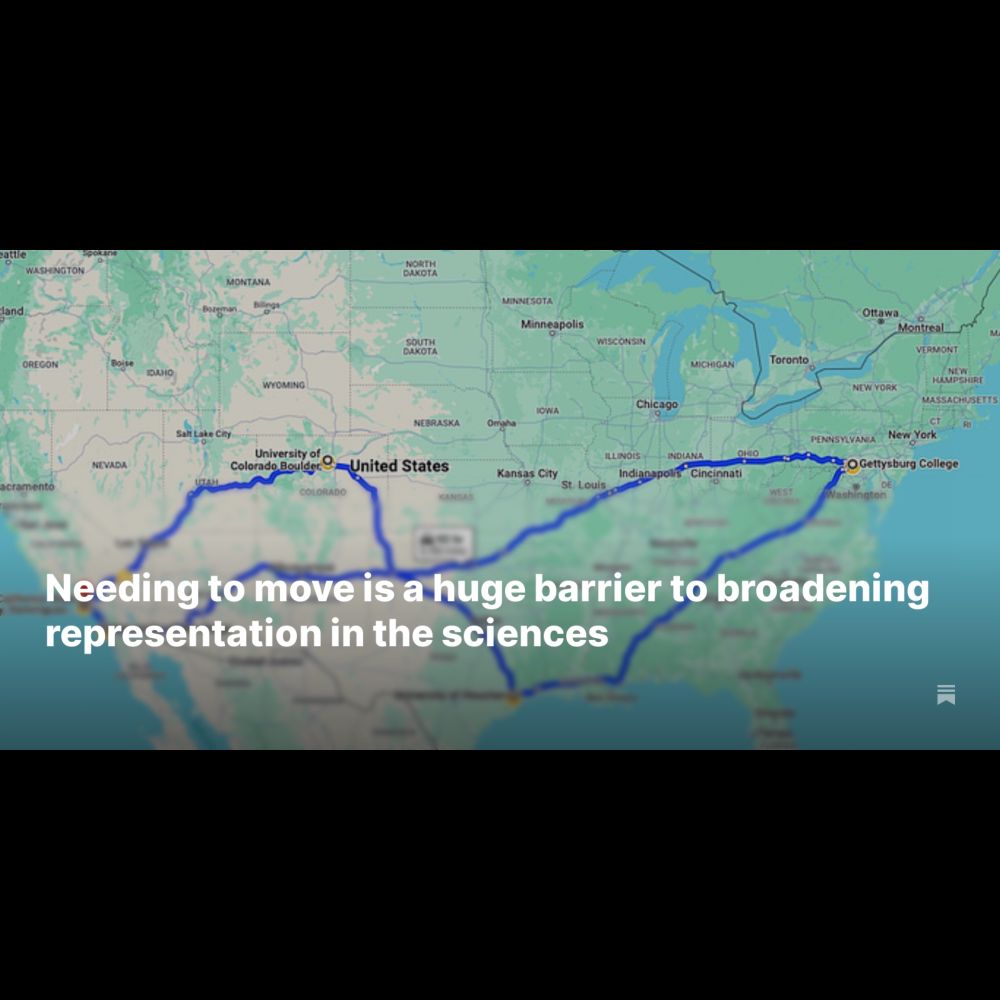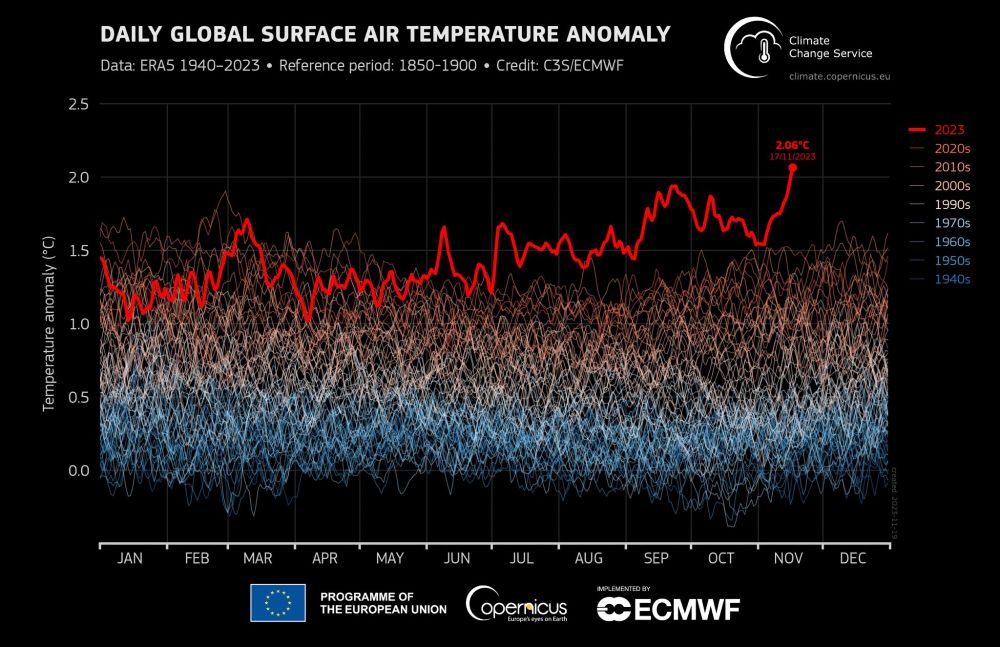It has been a privilege to mentor Skyanne as she grows into a scientist!
11.10.2025 12:03 — 👍 4 🔁 0 💬 0 📌 0
Yep that's my grad school buddy who has explained everything with his new book!
24.09.2025 20:03 — 👍 1 🔁 0 💬 0 📌 0
I really hate being captain science buzzkill.
"That science-y thing you're all talking about and excited about? Actually it's not true. But please still care about science!"
Ugh. It's no fun.
But it's not true! And it matters that it's not true! Someone should say so!
08.04.2025 18:14 — 👍 402 🔁 46 💬 17 📌 9

Buckeye candies, round balls with chocolate on the outside and peanut butter in the middle, sitting in a dish.

Ohio buckeye fruits and seeds scattered on the ground. The fruits are round, spiky, yellow spheres with white interiors. The nuts are dark brown with a buff-colored center.
A friend gave me some buckeyes, the lovely peanut butter and chocolate candy. Ohio buckeye is the most toxic tree in our flora, with potentially lethal doses in all plant parts. There is some irony that the candy is delicious but the actual nut can kill you, and that the Ohio state tree is toxic.
02.04.2025 14:08 — 👍 103 🔁 8 💬 7 📌 0

Cover page and photo plate for paper in the journal Castanea on an incursion of katrusa tree in central Pennsylvania. Lead author is an undergrad at Bucknell University.
Now in print: Observations of an incursion of katsura tree (Cercidiphyllum japonicum) + heavy seedling recruitment during COVID-related reductions in campus landscape maintenance. If u have a bunch of mature trees, heads up. #trees #invasive #undergradresearch castaneajournal.com/article/scie...
12.02.2025 19:29 — 👍 11 🔁 2 💬 3 📌 1
LibGuides: 1938 Aerial Photos of Cuyahoga County: Overview
LibGuides: 1938 Aerial Photos of Cuyahoga County: Overview
Spread the word... All 1938 aerial photos of Cuyahoga County, Ohio are now freely available to everyone in this digital archive: libguides.bw.edu/c.php?g=1379... 🌿🌎🧪
12.06.2024 19:29 — 👍 12 🔁 7 💬 0 📌 0

Needing to move is a huge barrier to broadening representation in the sciences
Science will be more inclusive and equitable when we stop expecting people to uproot their lives every few years
Imagine our profession was built so that you could advance your career without moving all the time. Isn't this a huge piece of the equity and access problem? Yes, it is.
12.12.2023 01:10 — 👍 424 🔁 127 💬 26 📌 34
link.springer.com/article/10.1...
If your institution doesn't subscribe, I am happy to email you a reprint! Just message me your email.
28.11.2023 18:48 — 👍 1 🔁 0 💬 1 📌 0
The upshot: we need to protect remaining primary forests, which cover only 6.7% of the landscape, from development. These forests contain northeast Ohio's natural heritage. And we can work on restoring biodiversity to post-ag forests, the majority of our current forests.
28.11.2023 18:31 — 👍 1 🔁 0 💬 0 📌 0
From 1938 to 1979, new lawns and development were largely built on agricultural fields, with only 10% of new lawns and development destroying forests. From 1979 to 2021, 23% of new development and 44% of new lawns destroyed forests.
28.11.2023 18:30 — 👍 0 🔁 0 💬 0 📌 0
Young forests were more likely to be developed than mature forests, which were relatively stable. Good news! However, this is changing...
28.11.2023 18:30 — 👍 0 🔁 0 💬 0 📌 0
Steeper slopes and lower elevations were more likely to remain and become forests, and oak forests were three times more likely to be kept than beech forests. That means current forests are a highly biased sample of presettlement forests, making remaining beech forests precious.
28.11.2023 18:30 — 👍 0 🔁 0 💬 0 📌 0
Most forest patches are <45 acres, and 75% of points in forest fall within 50 yards of an edge. This means fragmentation is likely having a big effect on the diversity, composition, and function of our forests.
28.11.2023 18:30 — 👍 0 🔁 0 💬 0 📌 0
2/3 of current forests are growing on former farmland, most established <85 years ago. These tend to be impoverished in biodiversity and altered in composition, but they represent a huge opportunity for recovery and restoration.
28.11.2023 18:30 — 👍 0 🔁 0 💬 0 📌 0
1/3 of current forests are primary, meaning they were never cleared for agriculture. These forests harbor the most biodiversity and are most similar to presettlement composition. This is a very high percentage compared to other places!
28.11.2023 18:29 — 👍 2 🔁 0 💬 0 📌 0
Over the past 220 years, Cuyahoga County experienced massive forest loss, from 98.7% to 12% of the landscape, and modest recovery, to 21%. Clearing for agriculture caused most deforestation in the 1800s, but development became the main agent of forest loss from the 1900s to now.
28.11.2023 18:29 — 👍 0 🔁 0 💬 0 📌 0
Our new analysis of land use change in Cuyahoga County, home of Cleveland, Ohio, published today in Urban Ecosystems. We trace how urbanization has impacted our native forests over the past 220 years, providing context for current growth. Highlights in thread: 🌿🧪🌎
28.11.2023 18:28 — 👍 7 🔁 4 💬 10 📌 0

Graph showing daily temperature anomaly hitting peak of 2.06°C on November 17th, 2023 for the time period starting from 1940 to 2023.
There's a deep sense of sadness and loneliness seeing this record shattering graph.
November 17, 2023 was the first day in recorded history when the earth's surface was a whole 2°C hotter than pre-industrial times. Yet, there's barely any chatter about this staggering breach.
20.11.2023 04:41 — 👍 1472 🔁 926 💬 25 📌 54
Here is my lab website: kathrynflinn.wordpress.com
10.11.2023 15:59 — 👍 0 🔁 0 💬 0 📌 0
@danirabaiotti.bsky.social Hi Dani, may I be added to the What's Science contributor list? Thanks!
10.11.2023 15:58 — 👍 0 🔁 0 💬 1 📌 0

Spotted my first lanternfly, at Cleveland Metroparks' Lakefront Nature Preserve, which is a peninsula in Lake Erie. This invasive crop pest recently arrived in northeast Ohio and lives primarily on tree of heaven. How did she get here? 🌿🌎
26.10.2023 18:26 — 👍 9 🔁 0 💬 1 📌 0

How lucky that my birthday coincides with the persimmon harvest! I'm making persimmon pudding with fruit I gathered from this native tree. Find a persimmon tree if you can... yes, they're seedy and squishy, but the flavor is worth it and like nothing else. 🌿
25.10.2023 18:00 — 👍 9 🔁 0 💬 0 📌 0
Like Wendell Berry, I am asking,
What has happened here?
What is here now? What is left of the natural endowment? What has been lost? Added?
What is the nature, or genius, of this place?
What will nature permit us, or help us do here?
What can we do to mend the damages we have done?
23.10.2023 15:07 — 👍 2 🔁 0 💬 0 📌 0
NYT bestselling author of the Southern Reach series, including Absolution. Repped by Joe Veltre at Gersh. Gigs: The Tuesday Agency. he/him
We publish and promote books by experts in the fields of gardening, horticulture, and natural history. An imprint of Workman Publishing.
𝙜𝙧𝙤𝙬 𝙬𝙞𝙩𝙝 𝙪𝙨🌿
nature writer, environmentalist, poet, and author of Halcyon Journey, In Search of the Belted Kingfisher, winner of the 2024 John Burroughs Medal
A worldwide union of vegetation scientists
Est. 1939
New members welcome!
For joining membership and our latest news, visit 👇
https://www.iavs.org/
Pittsburgh and Allegheny County government reporter, PublicSource.org | Interested in local government, elections, baseball, Pittsburgh
Longtime Pittsburgh journo. Managing editor at Pittsburgh's Public Source. Author of American Nightmare: Predatory Lending and the Foreclosure of the American Dream. Part of a 2018 Pulitzer-winning team. Gardener, cyclist, husband, dad.
Weekly eco-dispatches from the planet 🌎 | News, essays, and book reviews | Edited by @benlockwood.bsky.social | 100% anti-capitalist and reader-funded | 🔗 BriefEcology.com
I run HEATED, a weekly-ish newsletter devoted to climate accountability reporting and opinion. Philly-based. She/her.
📧: emorwee@proton.me
Signal: @emorwee.06
More than a million species could be lost to the Extinction Crisis in the coming decades. Learn about our work to save Earth's wildlife & wild places. www.biologicaldiversity.org
Molecular biologist from Texas, here to share my meanderings on nature, science, history, politics, and zombies. Long threads a specialty.
Managed by the City of Cleveland - Mayor's Office of Sustainability. Together, we're building a thriving green city on a blue lake. #SustainableCLE
Dad x2 | Scientist working on the causes and consequences of biodiversity loss | Liber Ero Chair @McGillU | co-chair GEOBON | co-director QCBS | co-chair IPBES biodiversity monitoring assessment | co-founder Habitat | He/Him
Founder 350.org and Third Act, author The Crucial Years on substack https://billmckibben.substack.com/
Author of 21 books, beginning with The End of Nature
We're a nonprofit news org dedicated to telling stories of climate solutions and a just future. Get our journalism in your inbox: https://grist.org/subscribe/
Assistant Professor @uarizona; macro-evolution, data science, and some ecology; Lab website: https://datadiversitylab.github.io/; Blog: https://ghost.cromanpa.synology.me/
Ecologist, nature enthusiast, broadcaster, create #NatureFile @RTElyricfm, make radio docs, weekly column in The Examiner.
Author of Wild Embrace
Mild mannered reviewer of #books on natural philosophy, #naturalhistory, #HistSci, & #HistMed. Gentleman naturalist. Tweedy. Beardy. Has been found out standing in many fields. Plays well with otters. (he/him; Gaian, polytheist) www.wellreadnaturalist.com
Associate Prof. & Founding Director, Native American and Indigenous Studies Initiative, Stony Brook University. New Book: Speculative Relations: Indigenous Worlding and Repair (Duke UP).
evolution, ecology, and physiology of wetland animals
- newPI @ CU Denver - EEW Lab - moore-evo-eco.weebly.com













